LIB 13.0%
Incumbent MP
Patrick Secker, since 1998.
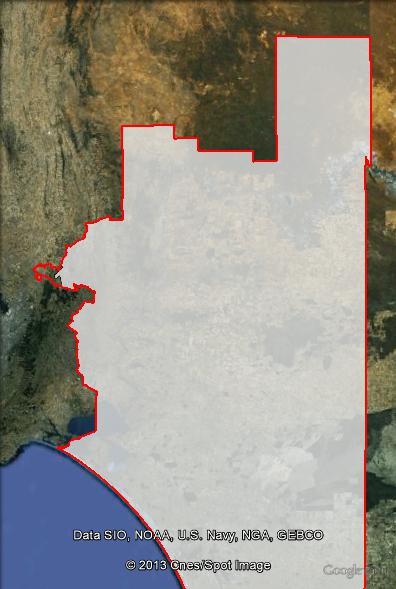
Geography
Barker covers southeastern parts of South Australia. It stretches from Mount Gambier in the southeastern corner of the state up to the Murray River and the Barossa Valley.
Redistribution
Barker’s boundaries were changed slightly, with western parts of the Barossa Valley, in the north-western corner of the electorate, transferred to Wakefield. This increased the Liberal margin from 12.9% to 13.
History
The seat of Barker was first created for the 1903 election, and has been a seat that has consistently voted for Conservative parties. Apart from two terms of the Country Party, the seat has been held by the main non-Labor party since its creation.
It was first won in 1903 by John Langdon Bonython, a Protectionist MP first elected as a member for South Australia at-large in 1901. Bonython retired in 1906 and was replaced by Anti-Socialist candidate John Livingston. Livingston held the seat as a member of the Liberal Party and Nationalist Party before his retirement in 1922.
The seat was won in 1922 by Malcolm Cameron, who was elected as a member of the breakaway Liberal Party, who opposed the leadership of Billy Hughes, but returned to the Nationalists after Hughes deposition. He held the seat until 1934.
The seat was won in 1934 by the Country Party’s Archie Cameron. He served as a minister in the Lyons government from 1937 until Lyons’ death in 1939. After Earle Page refused to serve in government with Robert Menzies, the Country Party replaced Page with Cameron as their leader, and Cameron led the party back into government.
Cameron, however, was replaced by Arthur Fadden as Country Party leader in 1940, and Cameron resigned from the Country Party and joined the United Australia Party. Cameron joined Menzies’ new Liberal Party in 1945 and was elected Speaker of the House in 1949. Cameron remained Speaker and Member for Barker until his death in 1956.
The ensuing by-election was won by Liberal candidate Jim Forbes. He served as a minister in the Liberal government from 1963 until the election of the Whitlam government in 1972.
Forbes retired at the 1975 election, and was replaced by James Porter, who held the seat for fifteen years. He was replaced in 1990 by Ian McLachlan, a former president of the National Farmers Federation. McLachlan served as Minister for Defence for the first term of the Howard government, retiring in 1998.
The seat was won in 1998 by the Liberal Party’s Patrick Secker, who has held it ever since.
Candidates
Sitting Liberal MP Patrick Secker is not running for re-election.
- Mark Keough (Greens)
- Kristin Lambert (Family First)
- Balwinder Singh Jhandi (Palmer United Party)
- Miles Hannemann (Nationals)
- Phil Golding (Labor)
- Richard Sage (Independent)
- Tony Pasin (Liberal)
Assessment
Barker is a safe Liberal seat.
2010 result
| Candidate | Party | Votes | % | Swing |
| Patrick Secker | LIB | 51,810 | 54.96 | +8.15 |
| Simone McDonnell | ALP | 26,433 | 28.04 | -2.03 |
| Sean Moffat | GRN | 8,607 | 9.13 | +4.06 |
| Trevor Honeychurch | FF | 5,829 | 6.18 | +0.46 |
| Steven Davies | CLSC | 1,591 | 1.69 | +1.69 |
2010 two-candidate-preferred result
| Candidate | Party | Votes | % | Swing |
| Patrick Secker | LIB | 59,278 | 62.88 | +3.43 |
| Simone McDonnell | ALP | 34,992 | 37.12 | -3.43 |
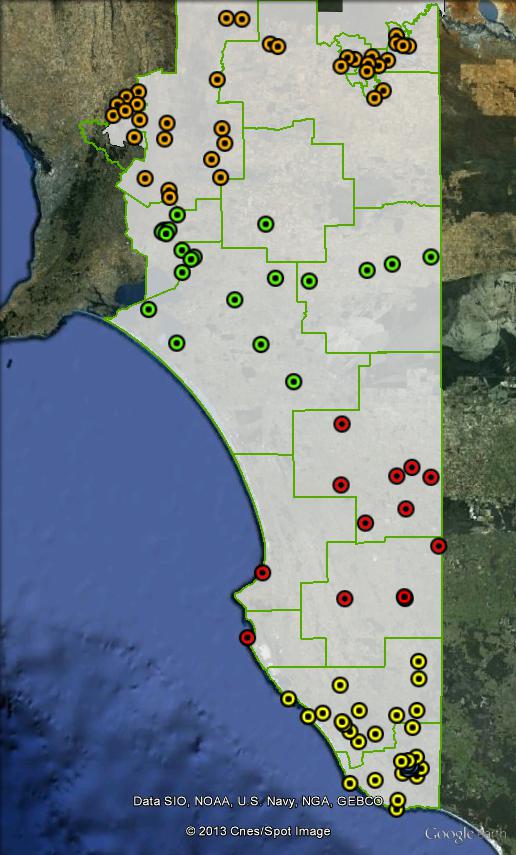
Booth breakdown
Booths have been divided into five areas. Polling places in the southern city of Mount Gambier have been grouped together. The remainder of the seat has been split into four strips that stretch across the electorate. From north to south, these are North, Murray Mallee, Upper South East and Lower South East.
The Liberal Party won a slim 51.5% majority in Mount Gambier, and larger majorities in other areas, ranging from 61.2% in the Lower South East to 75.9% in the Upper South East.
| Voter group | GRN % | LIB 2PP % | Total votes | % of ordinary votes |
| North | 10.24 | 61.97 | 27,076 | 37.96 |
| Murray Mallee | 10.02 | 64.50 | 12,699 | 17.80 |
| Mount Gambier | 9.17 | 51.46 | 11,214 | 15.72 |
| Lower South East | 6.97 | 61.22 | 10,749 | 15.07 |
| Upper South East | 6.21 | 75.86 | 9,598 | 13.45 |
| Other votes | 9.23 | 64.67 | 21,304 |
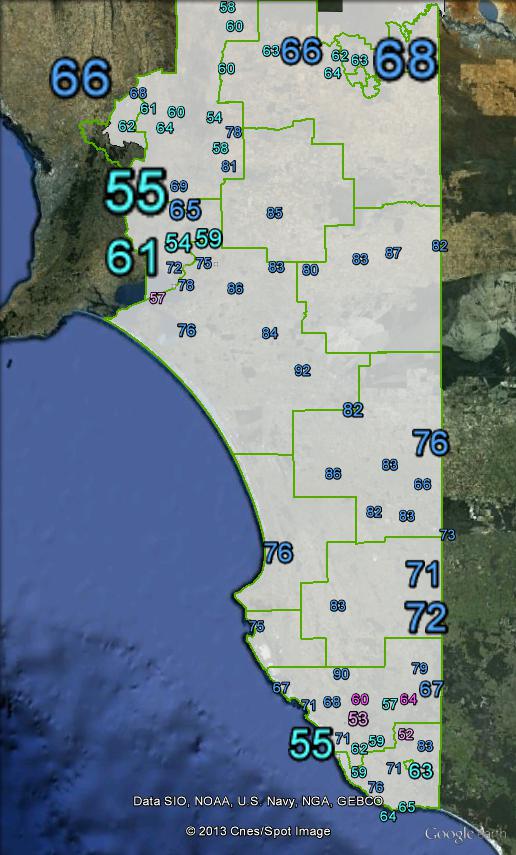
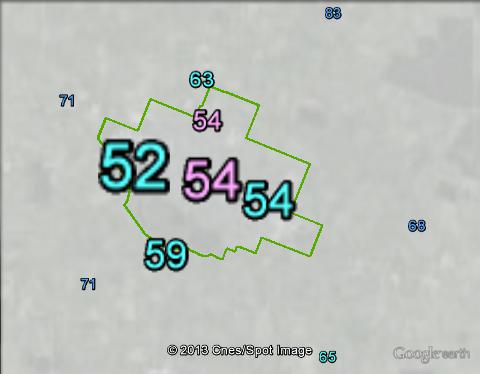
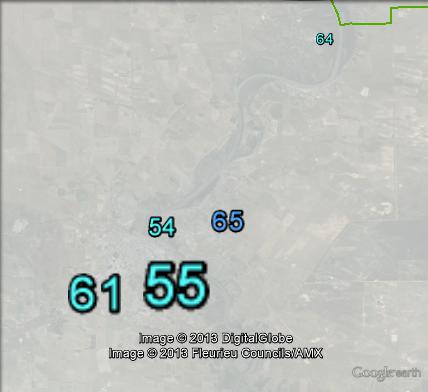
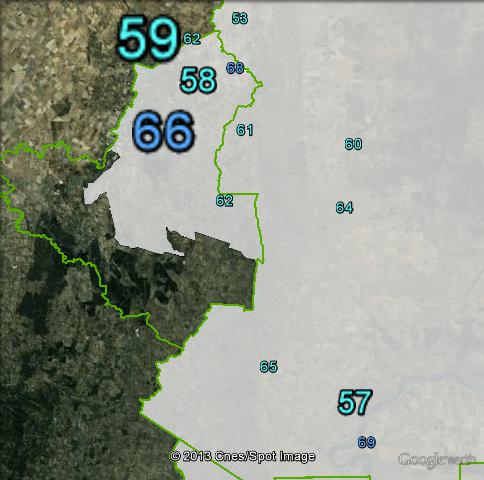
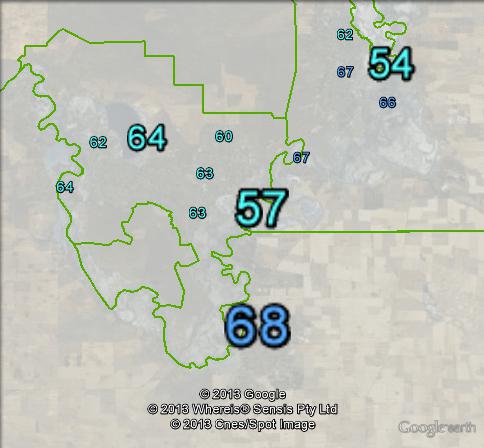


The SA Nationals, who didn’t contest the 2010 election at all, had announced a candidate here, James de Barro, but he pulled out last month and the preselection was reopened
http://www.abc.net.au/news/2013-05-28/nationals-barker-candidate-james-de-barro-withdraws/4717182
Grant District Council Mayor Richard Sage is running as an independent
http://www.abc.net.au/local/stories/2013/06/13/3781199.htm?site=southeastsa
Miles Hannemann is the new Nationals candidate
http://www.murrayvalleystandard.com.au/story/1583362/nationals-endorse-new-candidate/?cs=1275
Looking at the “recent” voting patterns in this seat, I suspect that it’s very slightly in play – that is, in a perfect storm situation, Labor could get this seat (so, less than 1% chance, but non-zero).
Why? Well, the current MP was defeated for pre-selection, for one thing. Looking back at the last time the sitting MP in this seat retired, we see a different distribution than existed at the time. In 1996, Ian McLachlan had 62.5% primary vote, and nearly 71% with preferences. Labor’s primary vote was 23%. Then in 1998, when McLachlan retired, the current MP, Patrick Secker, saw a 7% swing against him in 2PP.
In 2010, Secker got just 55% primary vote (in 2007, it was 47%, and that was with the Nationals having over 10% of the vote for their competing candidate). This indicates that Coalition support in the seat has been on the decline, and in combination with Secker being forced out, means that I think we’ll see significantly more people voting ALP or Nationals that voted Liberal in previous elections.
My actual prediction is that it’ll be a Liberal hold with about 55% 2PP… but less than 40% primary vote for the Liberals.
The Libs won Barker with 62.88% 2pp, while they only got 46.82% across SA – it’s about 16% safer for them than the state average. That figure may be declining, but currently Labor would need to win SA with over 65% of pp vote for Barker to be in play, which will almost certainly never happen. Labor haven’t won Barker in 110 years, and won’t this year either.
Barker isn’t a completely safe seat, though. The state seats of Chaffey, MacKillop and Mt Gambier have all elected independents (or the SA Nats) in the recent past. The current mayor of Grant council, Richard Sage, is running as an independent. His predecessor, Don Pegler, is now the state member for Mt Gambier. He’s got a better chance of winning than Labor (although still not very much).
Family First have Kristin Lambert running http://www.murray-pioneer.com.au/editorial/23085-barkerE28099s-marginal-interest/
If Pasin is doing his legwork, I’d expect an above average Coalition swing in this seat. It is one of the safest coalition seats in the country, but the outgoing member has had a low political profile outside his own party and a series of high-profile incidents generating adverse publicity. This is a seat that used to be represented from Adelaide – Secker was the first member to actually live in the seat – and expects to have a high profile member.
Phil Golding has now been announced as the Labor candidate
http://www.murrayvalleystandard.com.au/story/1684906/sa-labor-caught-short/?cs=1275
Why didn’t the SA Nats run in 2010? Seems a little odd. But the state seats show the vote here could be volatile, but in a landslide Coalition year surely the Libs will win easily
This will be interesting. Part of the reason Secker was on the decline was his lack of visibility in the seat (he is known in many towns in the electorate as ‘The Invisible Man’) – hence him being dumped in preselection. However, locals like someone living in the seat and Secker may have mitigated an even stronger reaction against his lack of presence. A Lib candidate alone will not create a swing – if the Nat candidate has more recognition and skills, and lives locally (which the candidate does), this could be interesting.
I googled this seat and was surprised at the number of articles online about the Liberals attacking the Nationals candidate as not being a Coalition candidate etc – has Hannemann got the Lib on the ropes?
I think it’s just a credible alternative for once.
In my opinion, parties of other persuasions don’t tend to field good candidates in safe seats, assuming that the incumbent will win. But many electors are open-minded – they just want someone realistic!